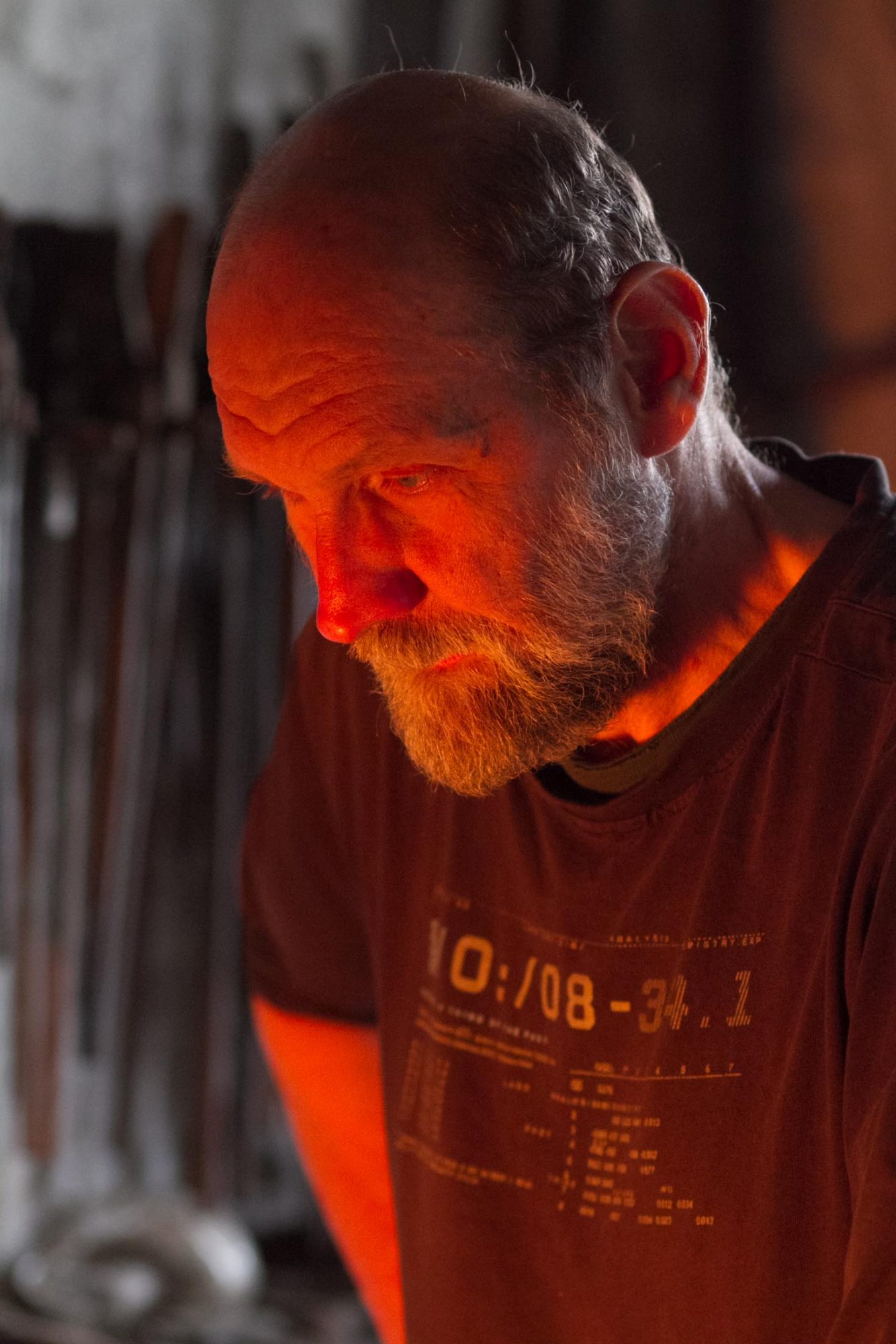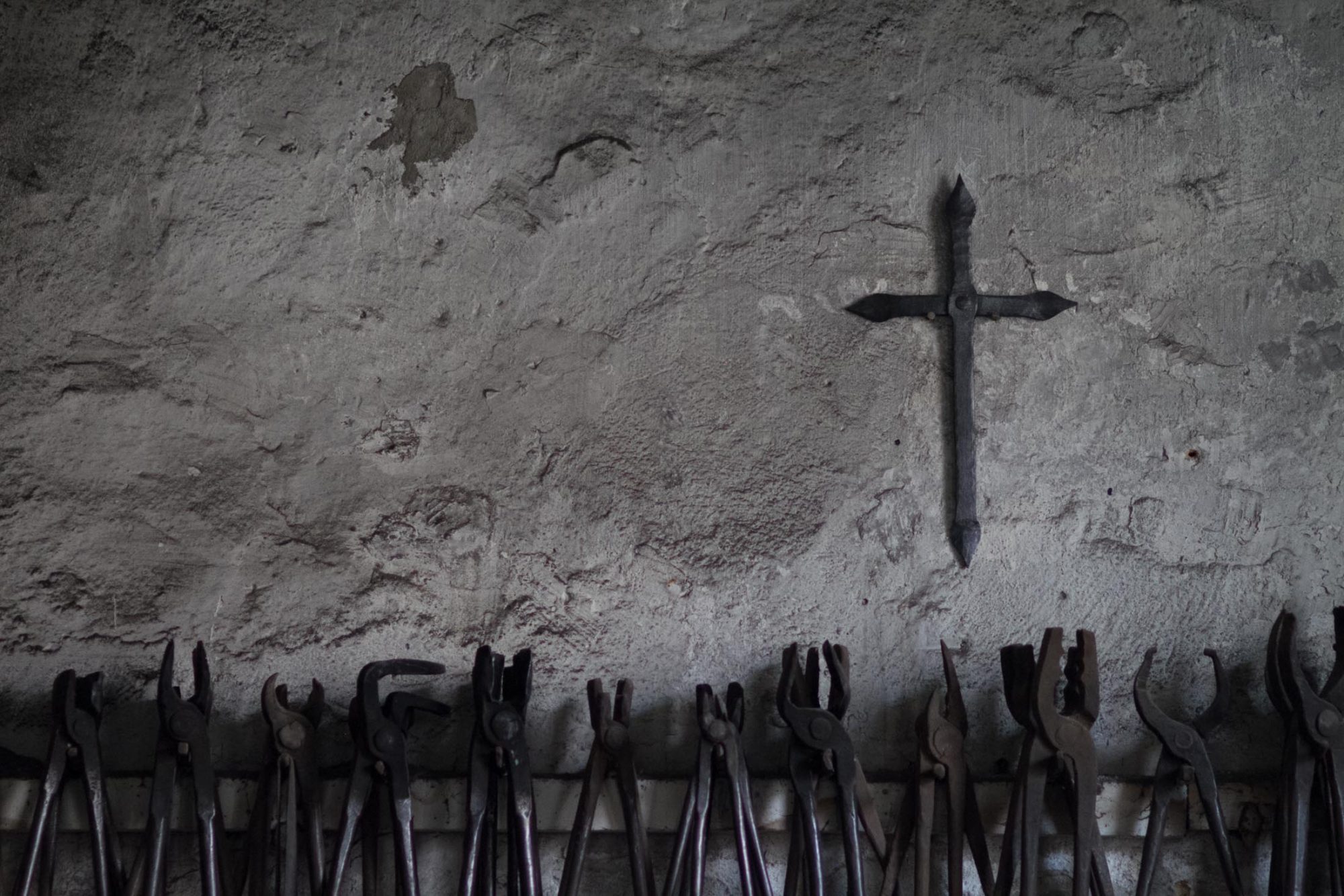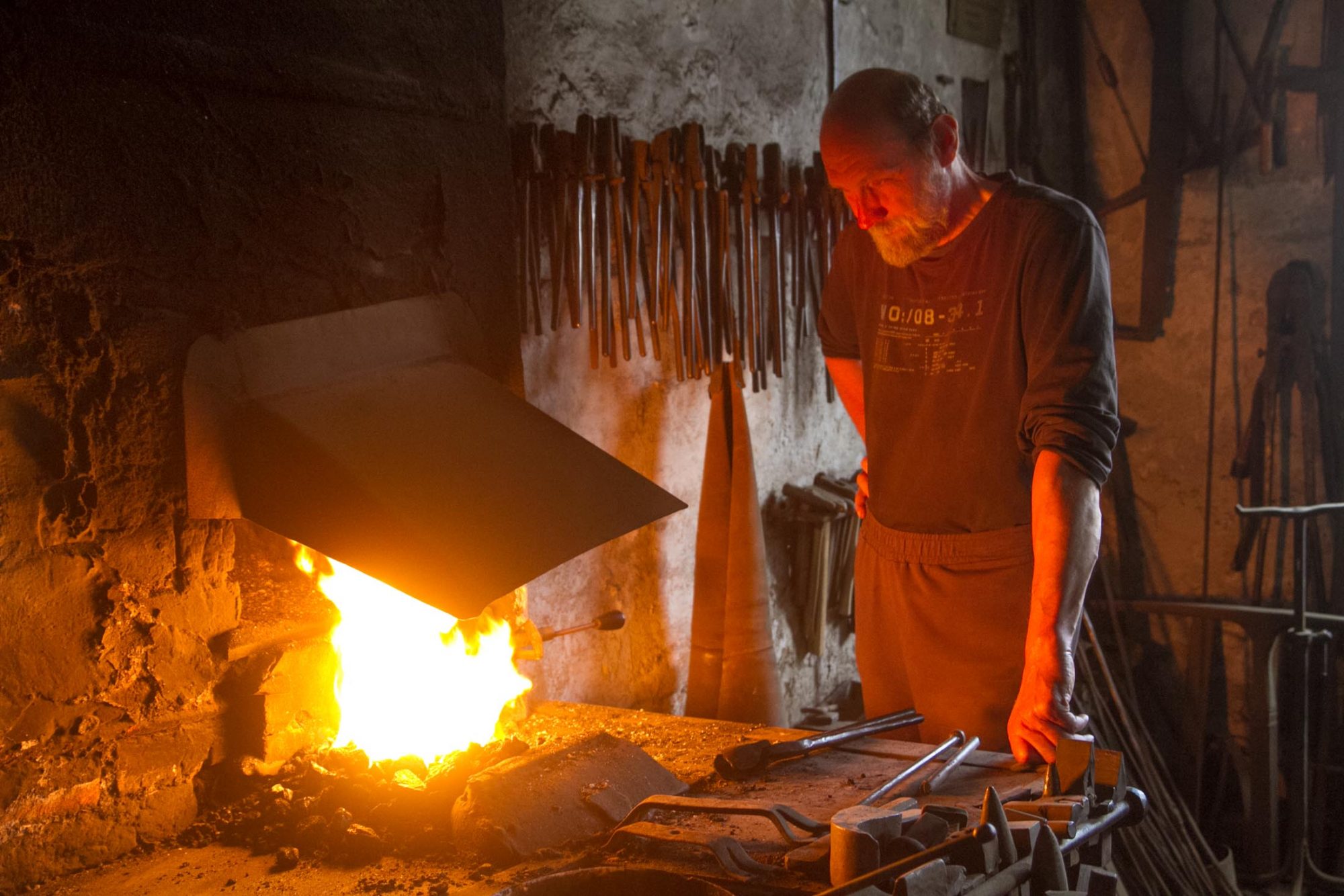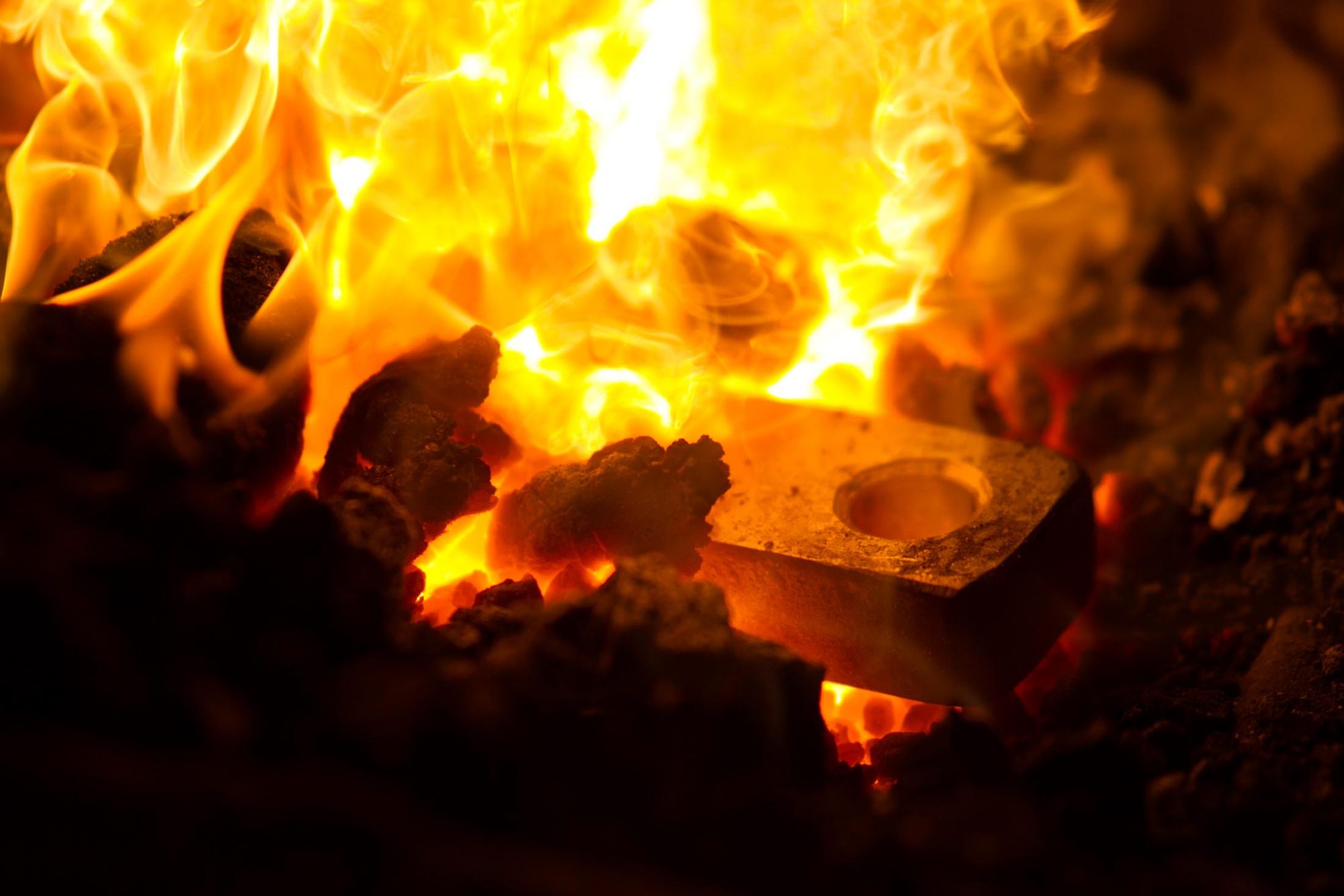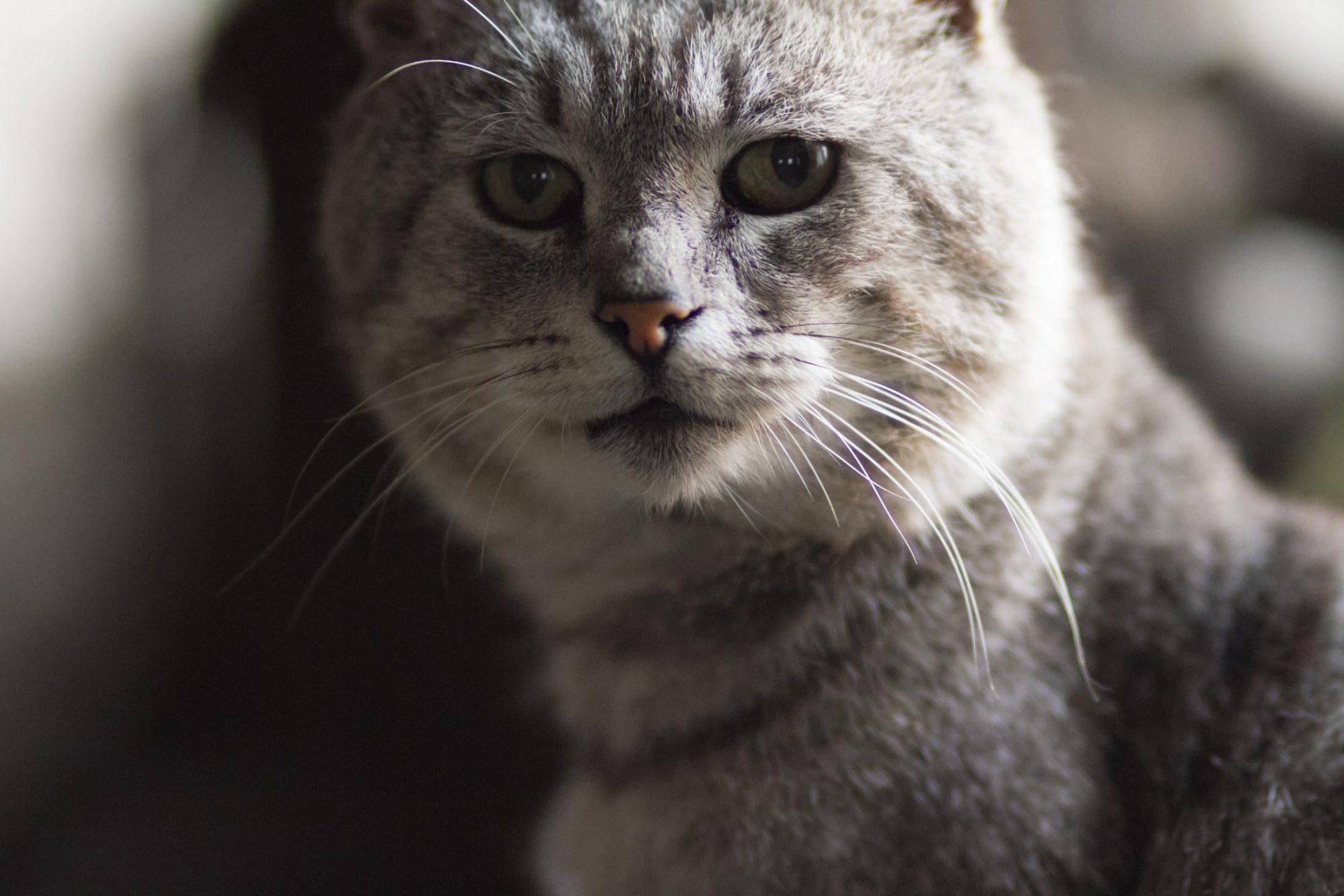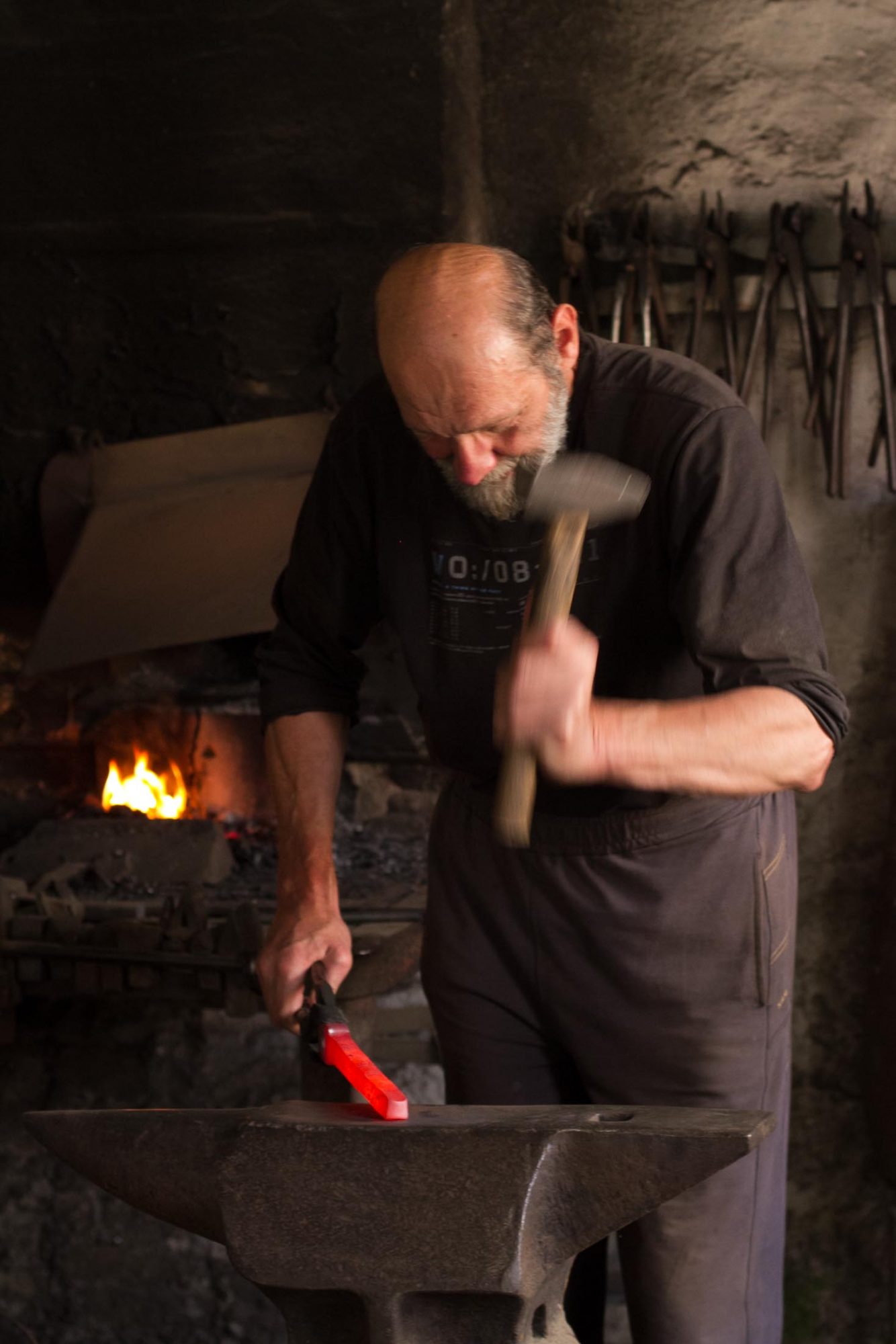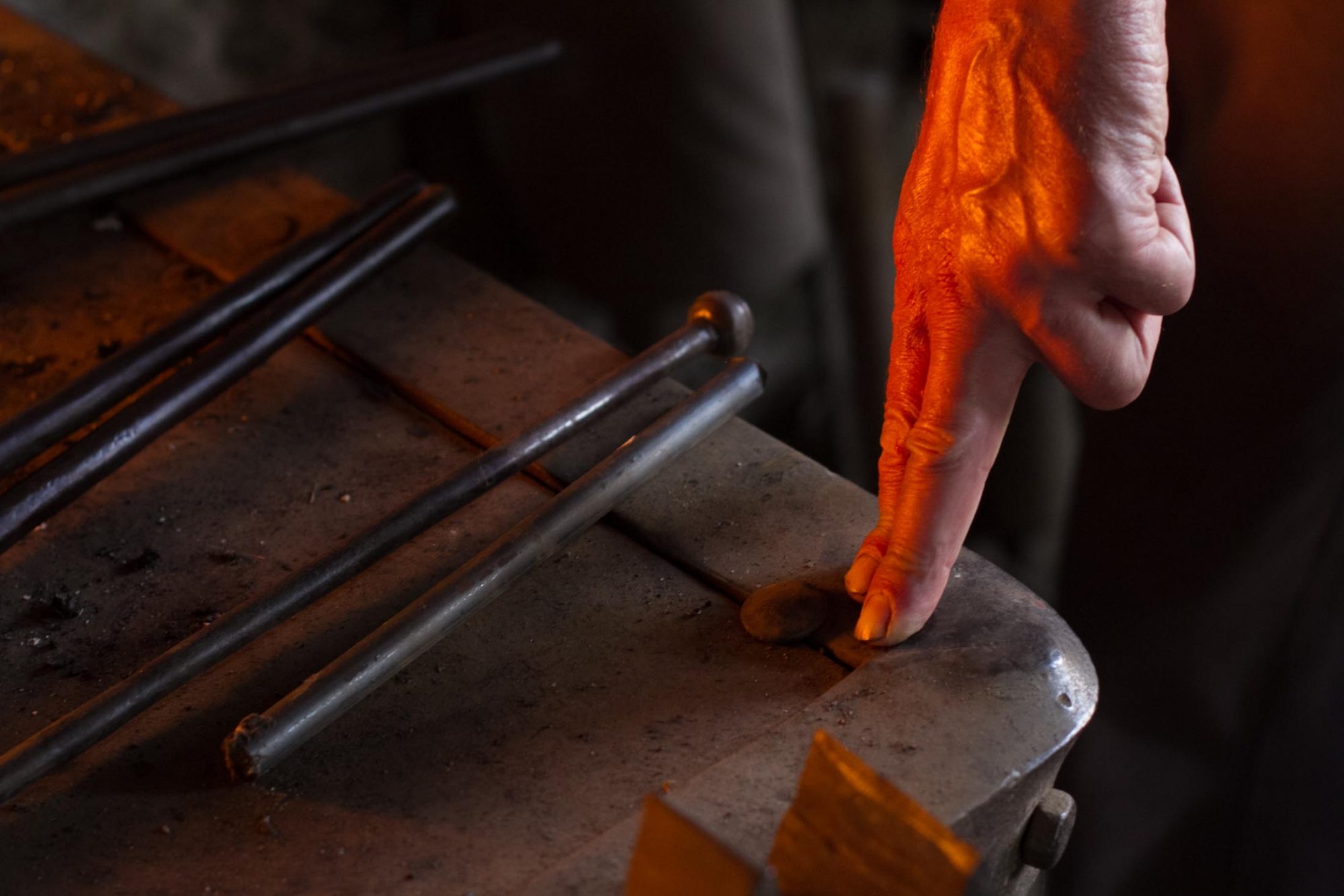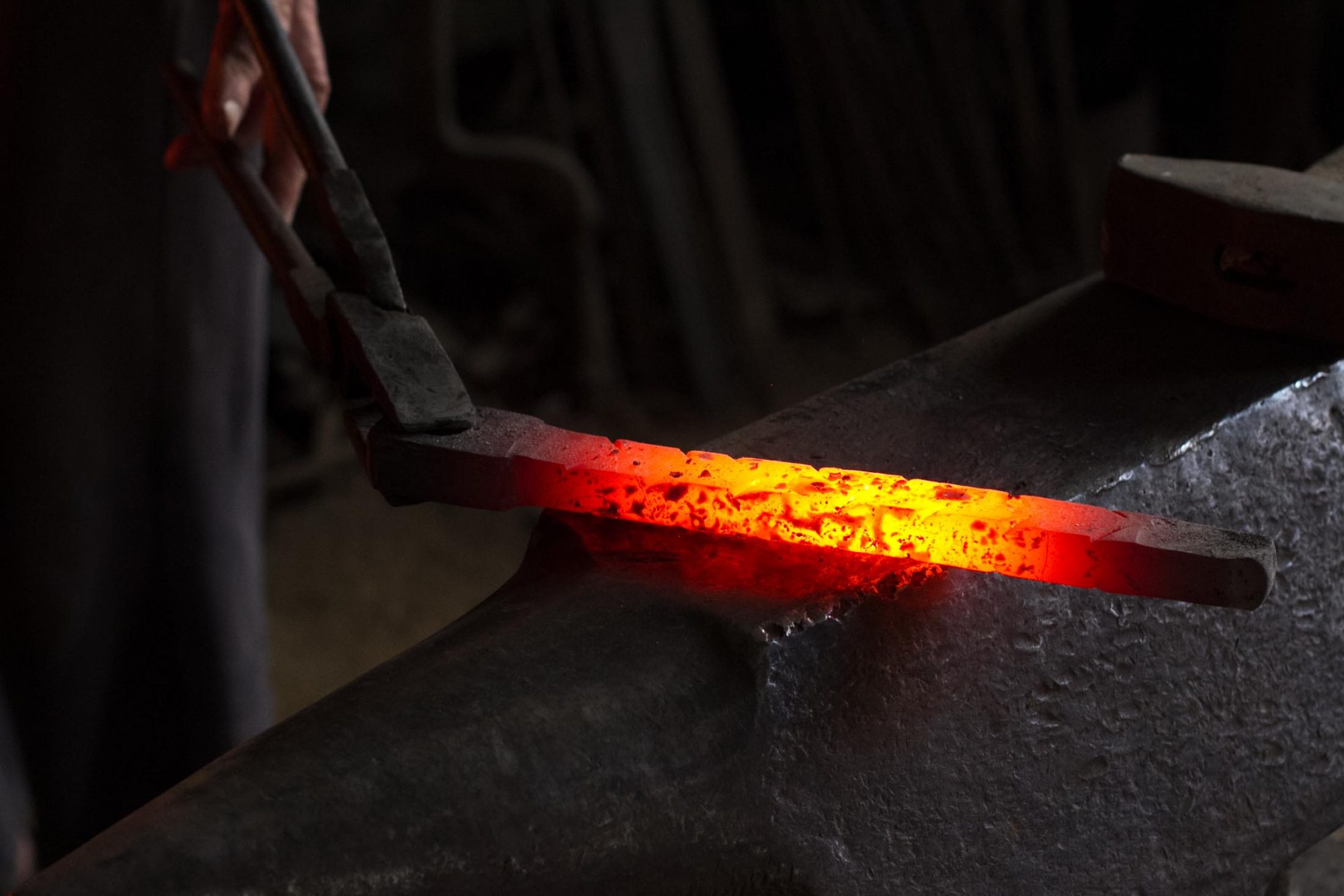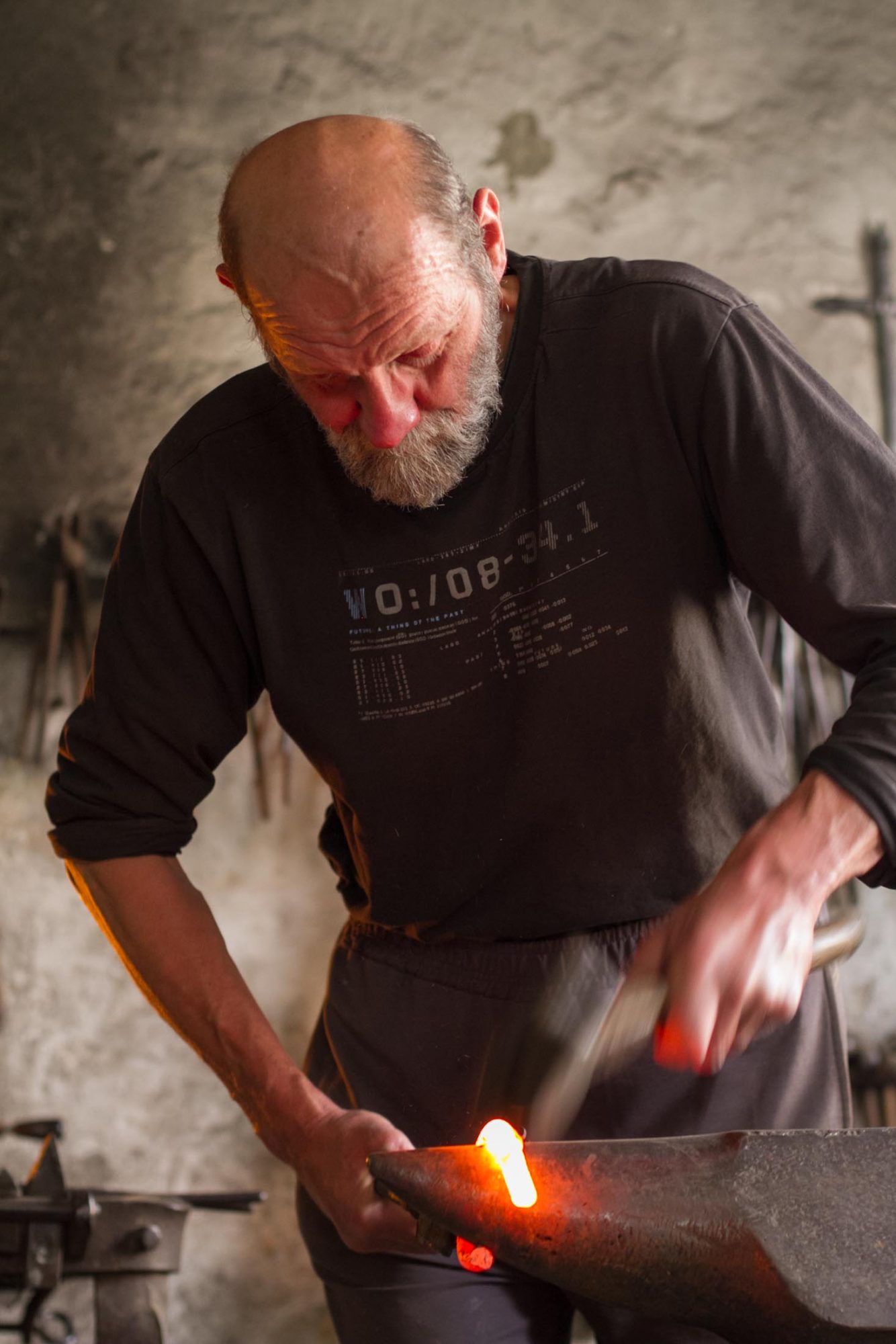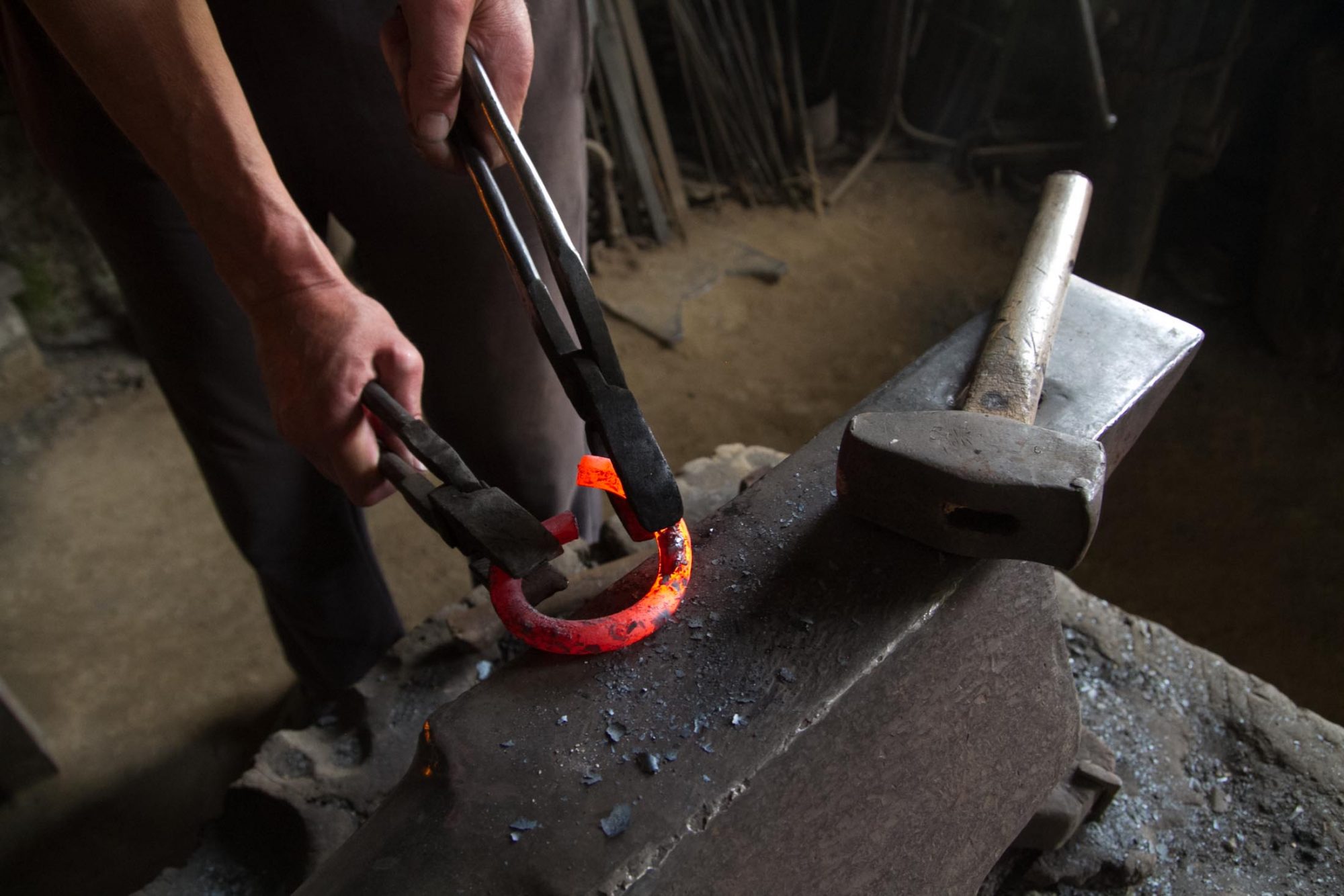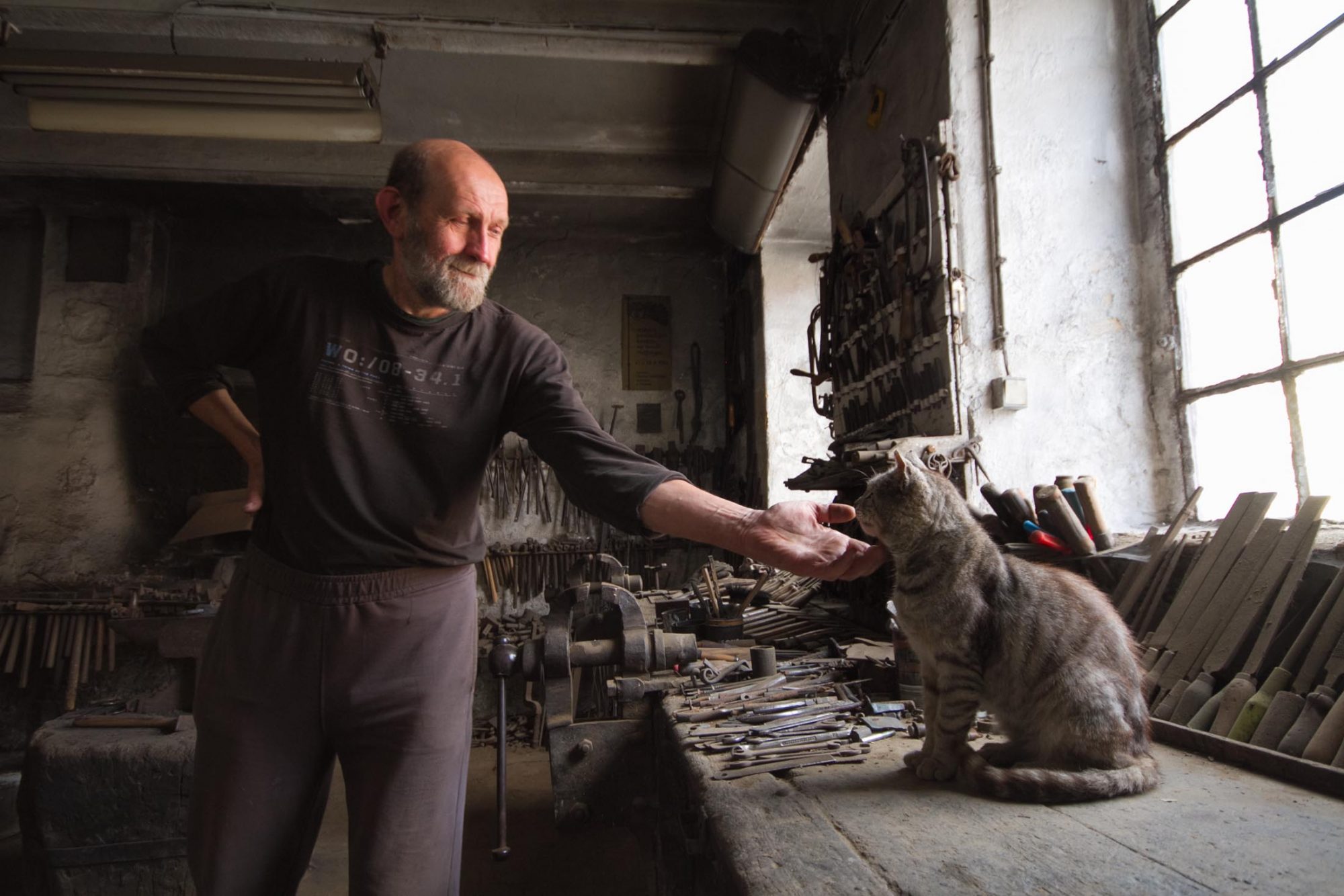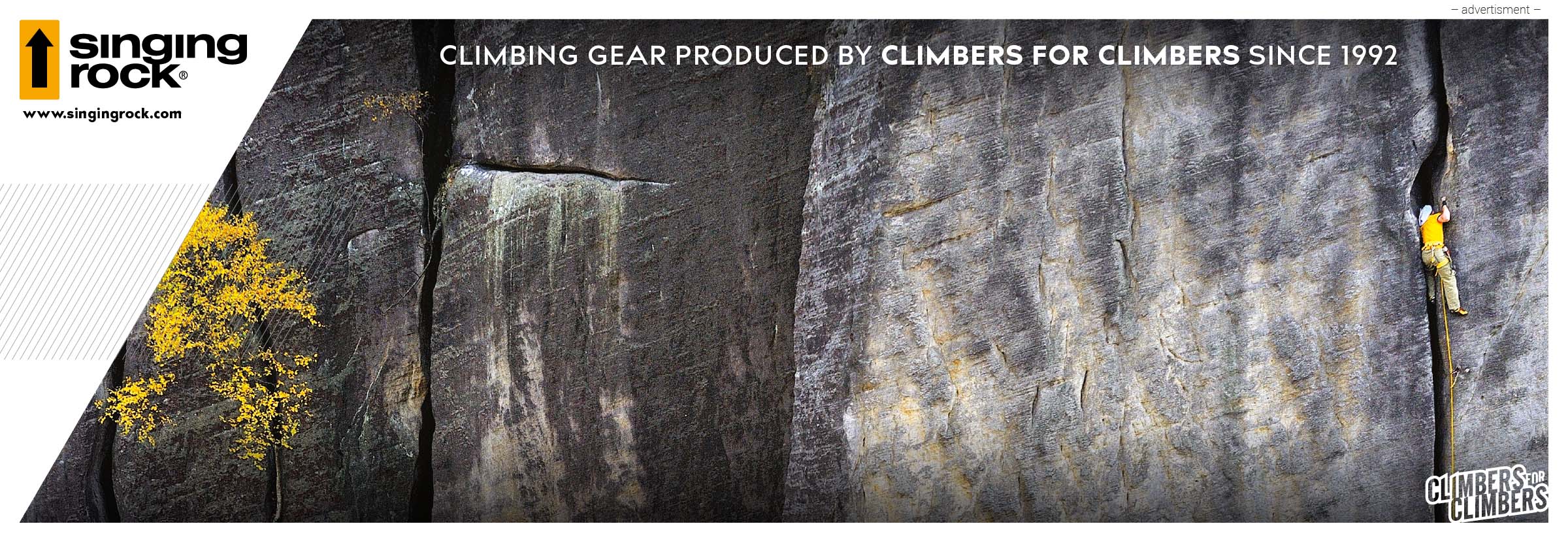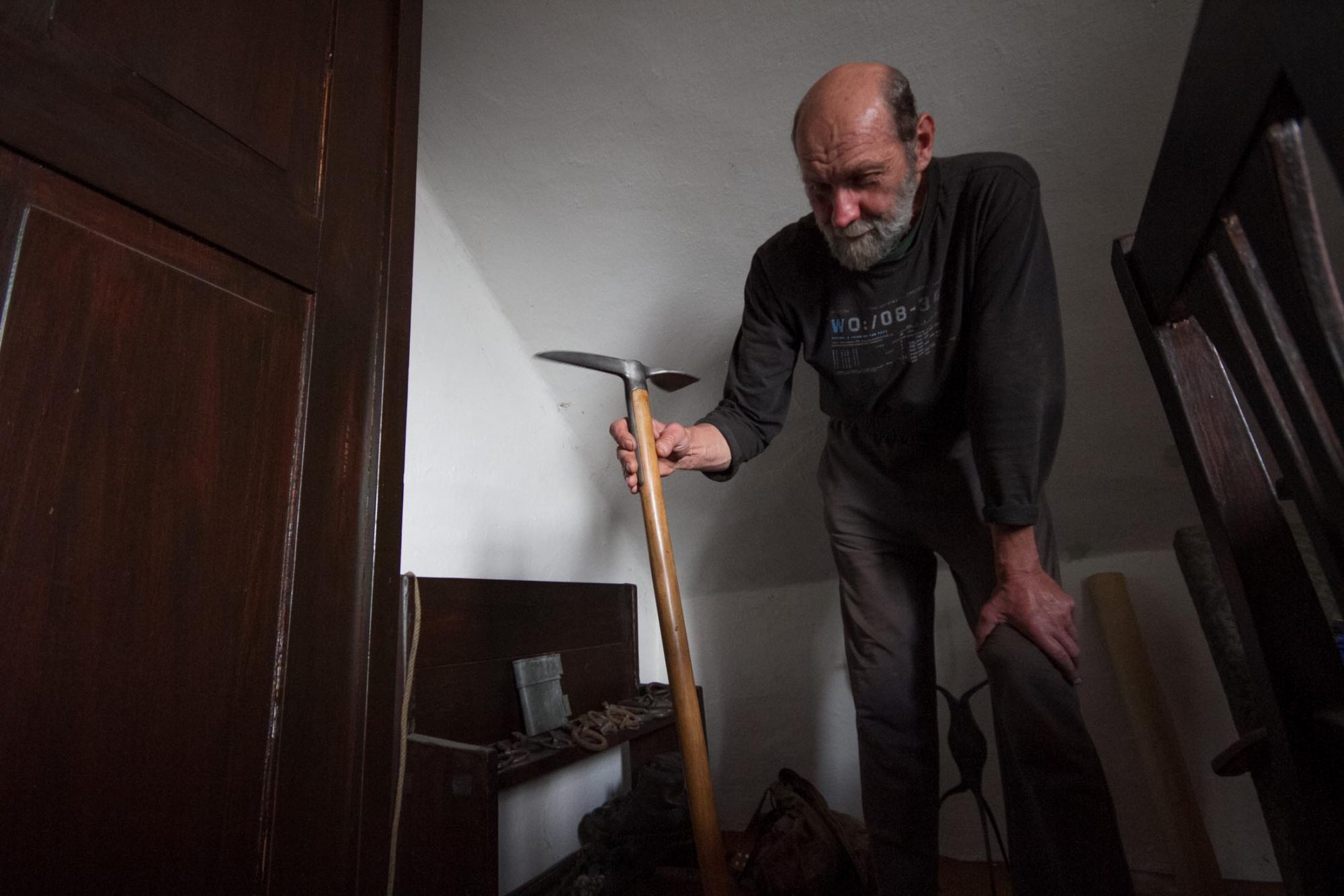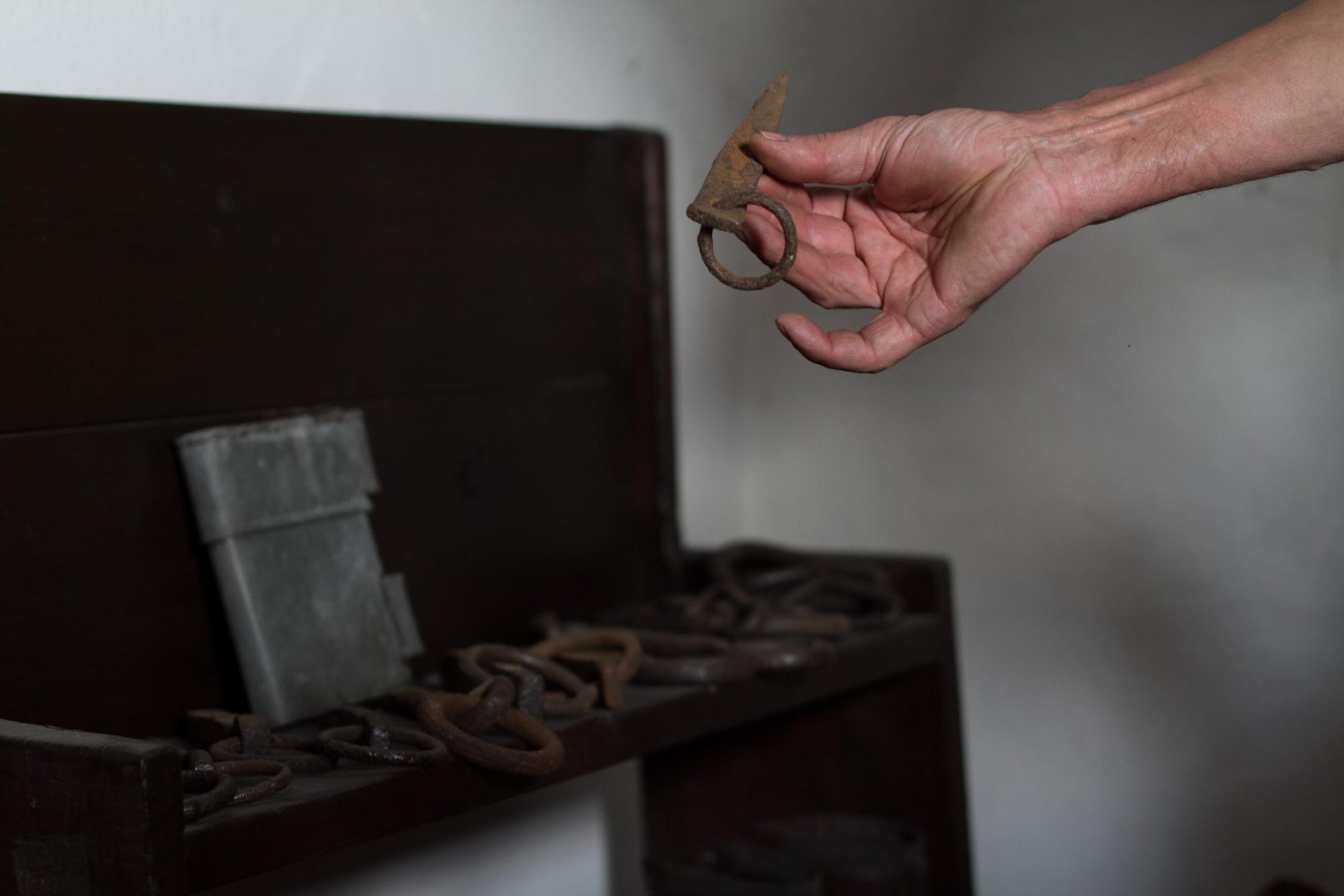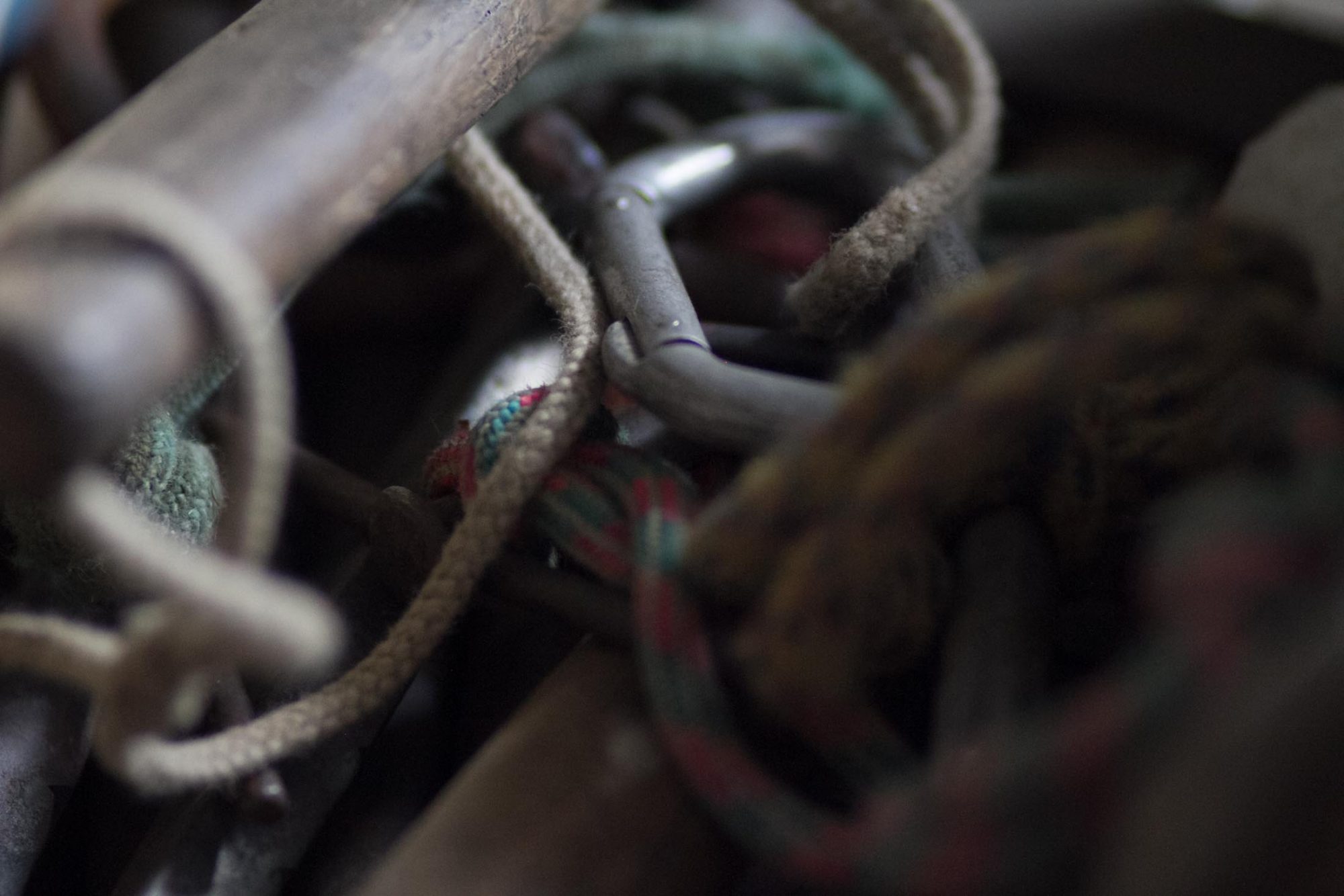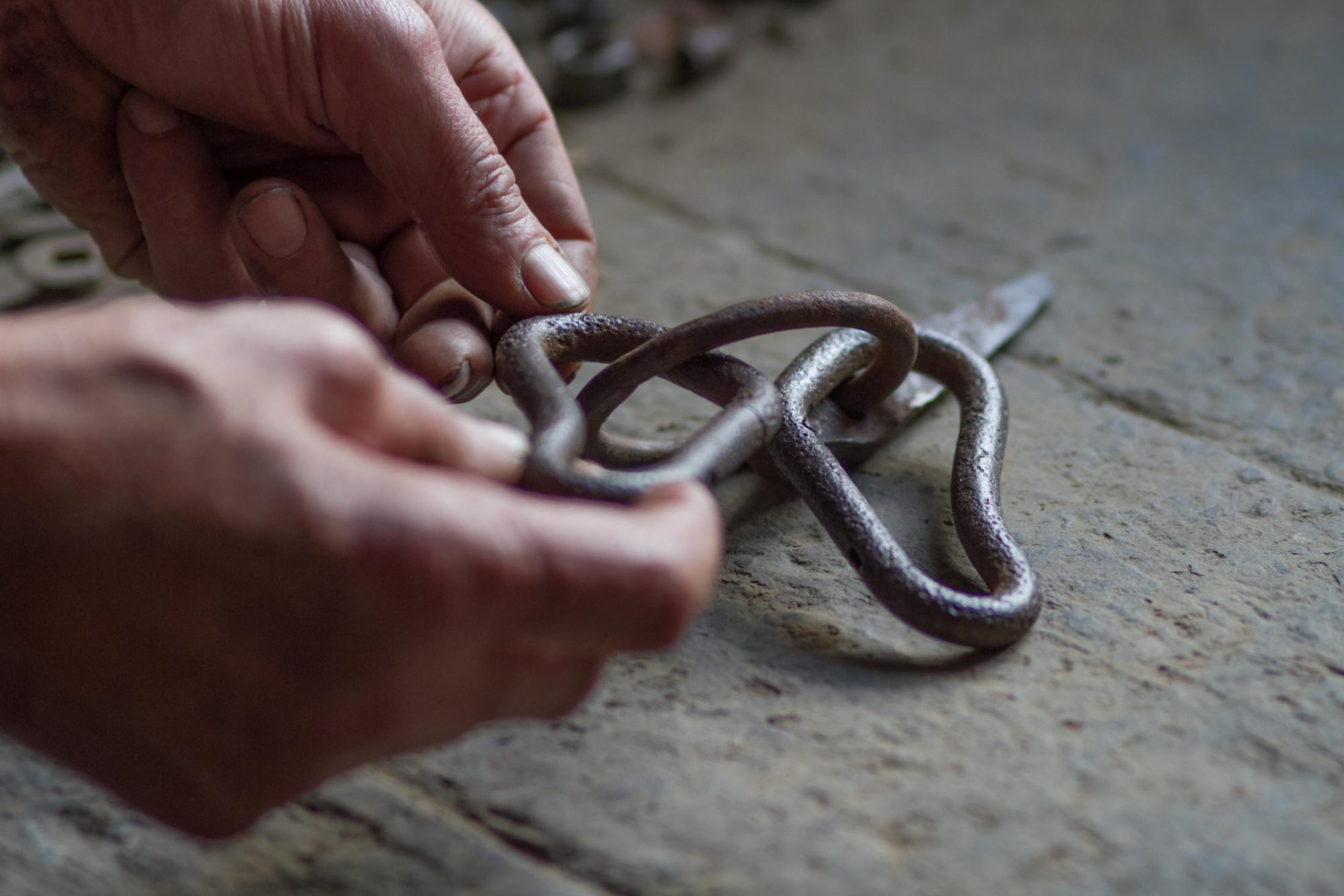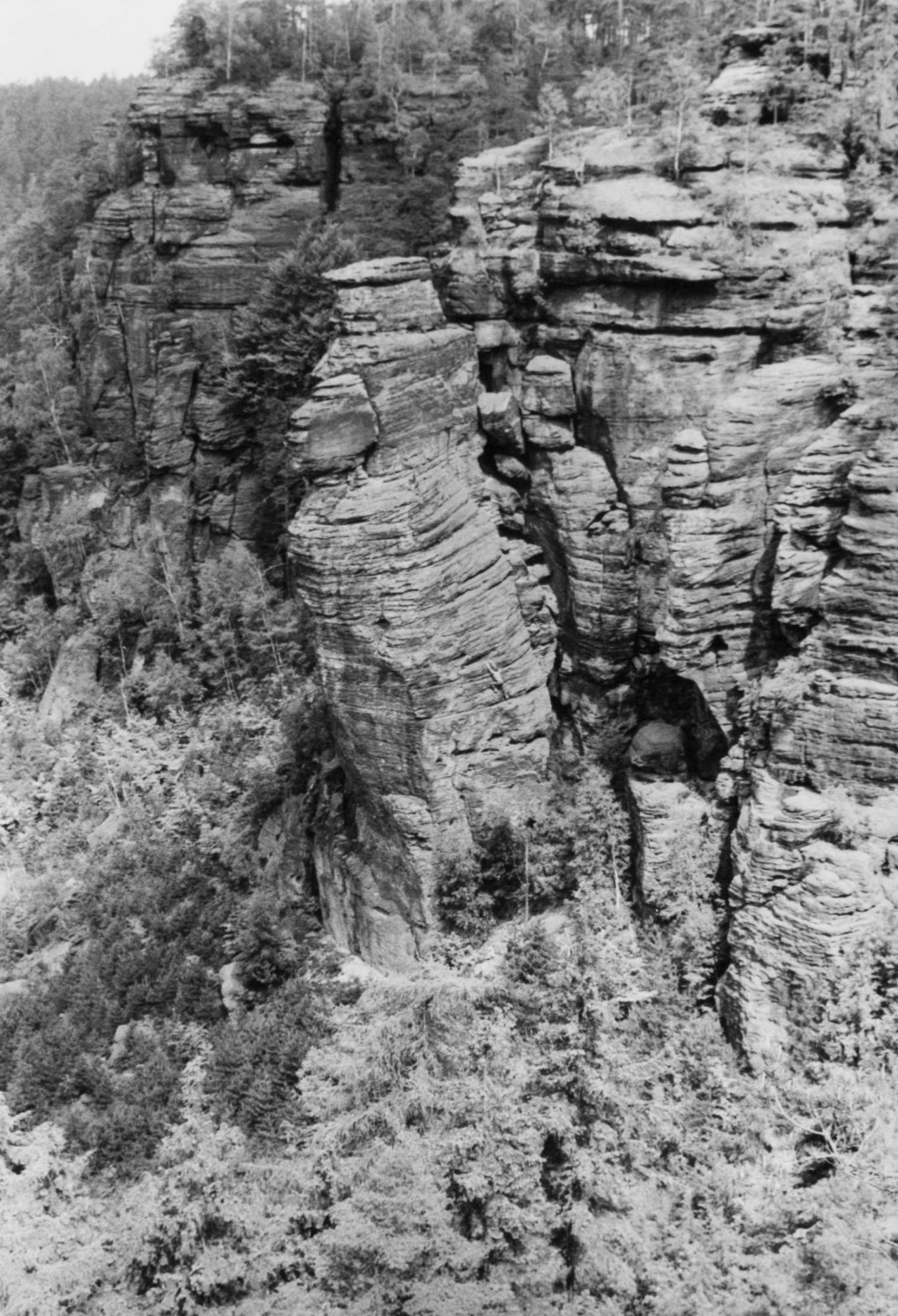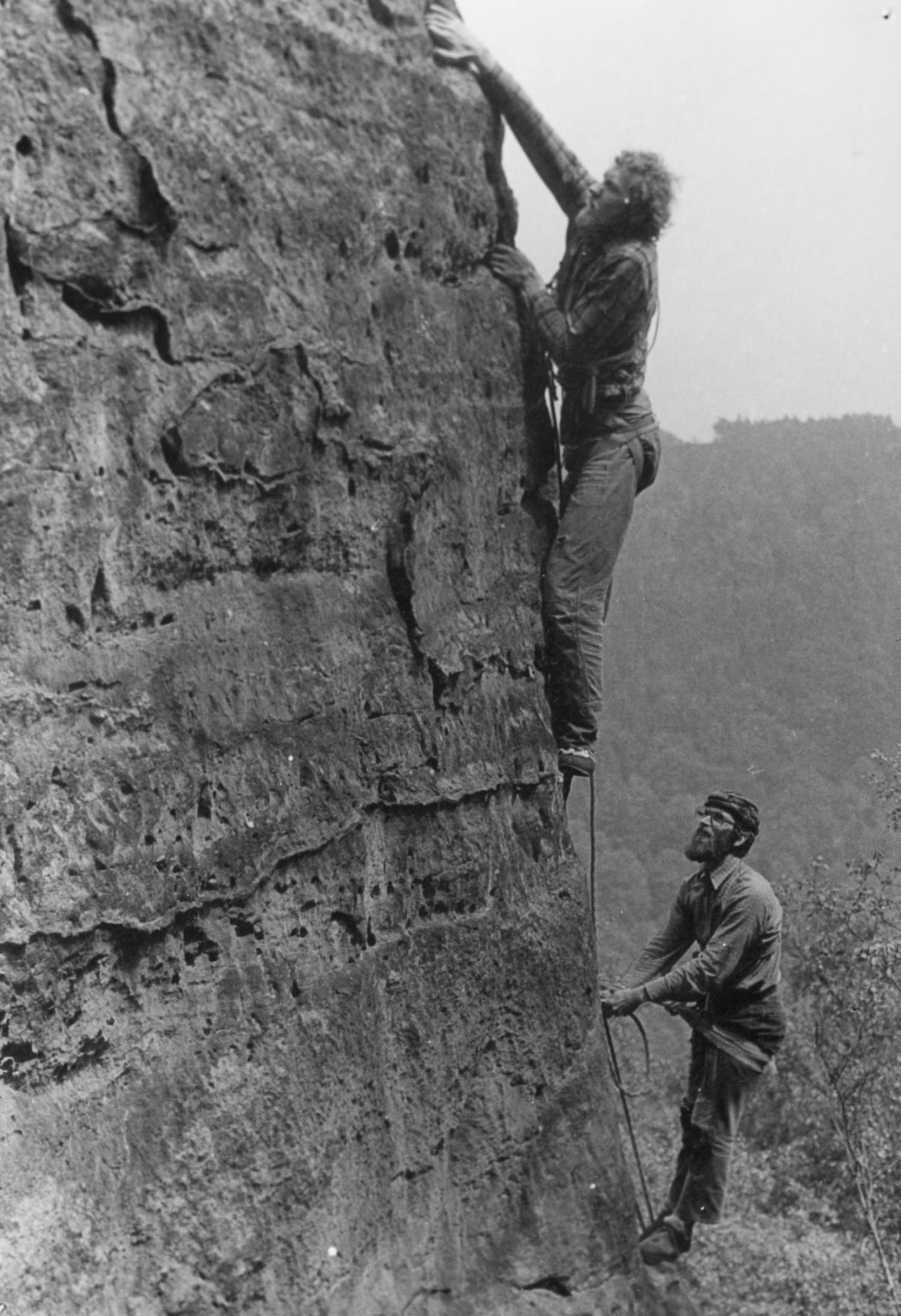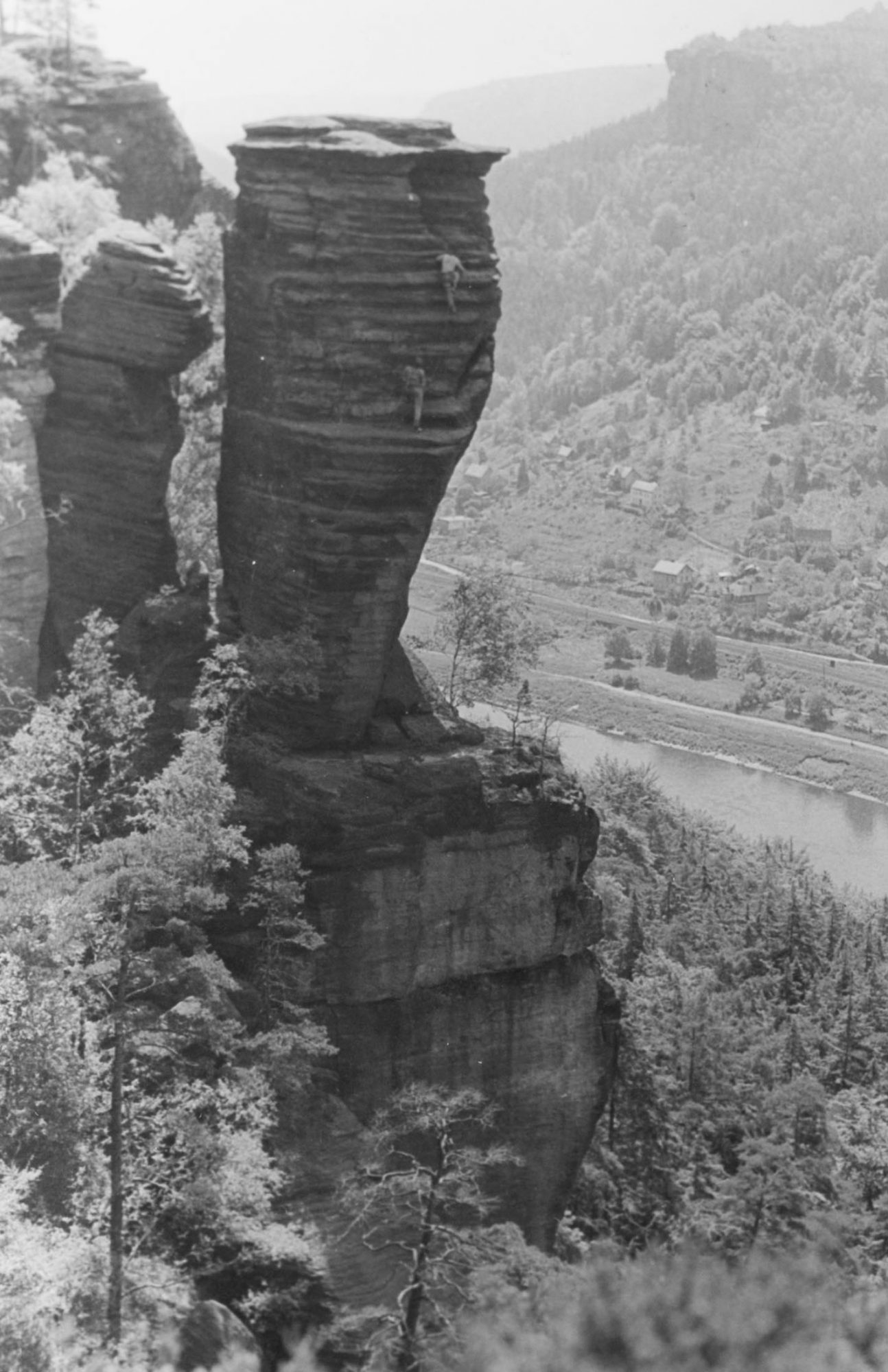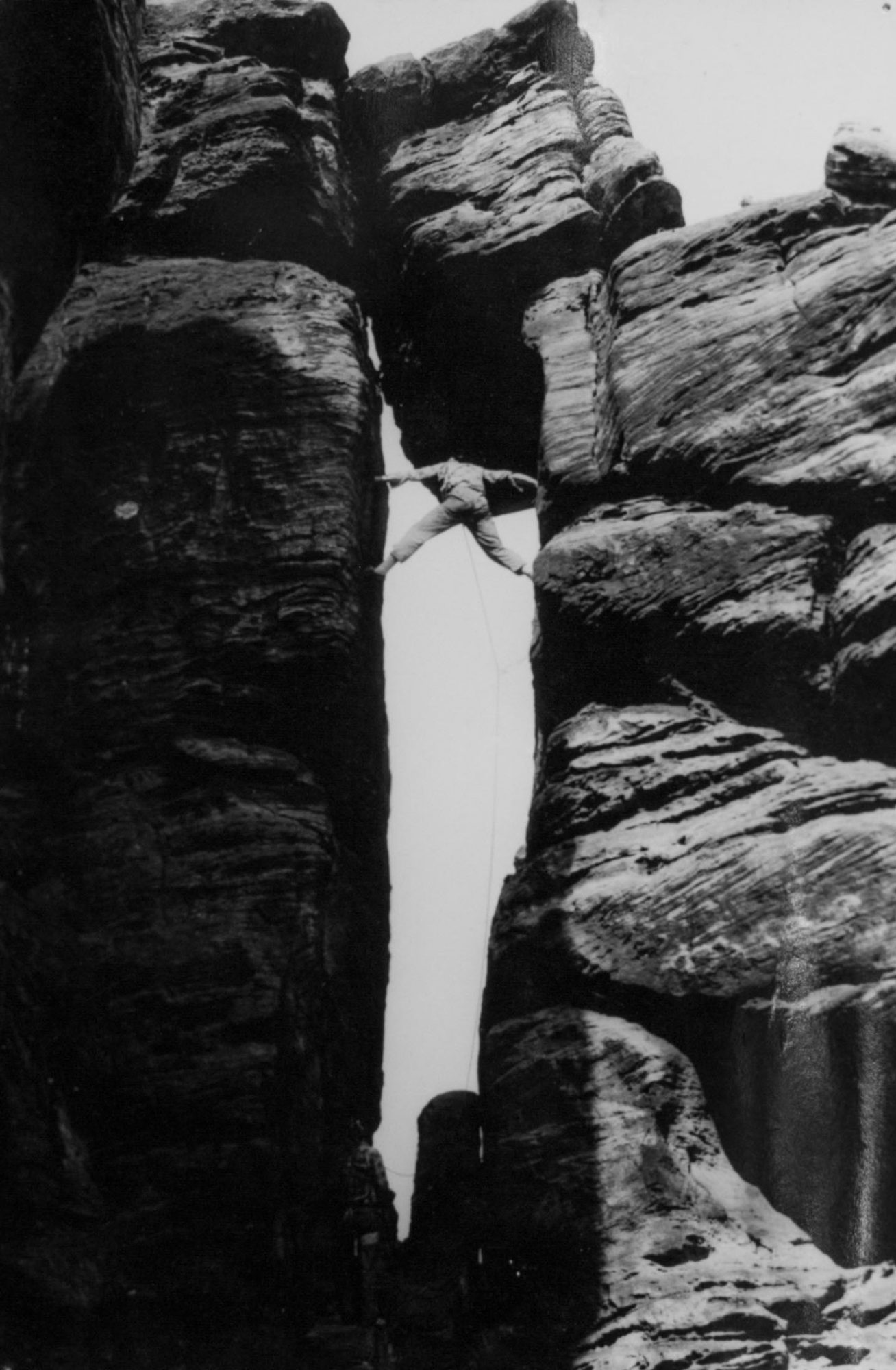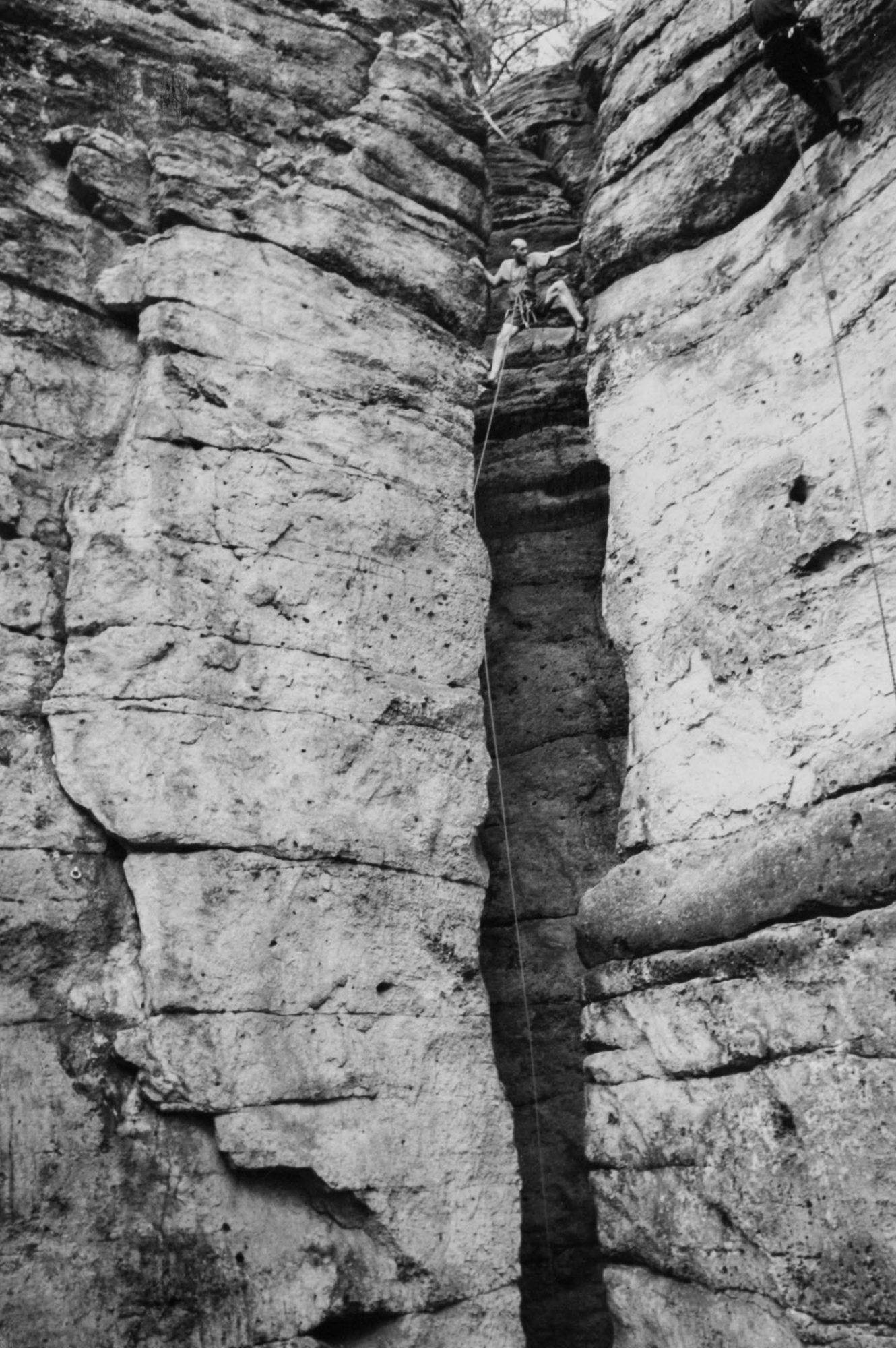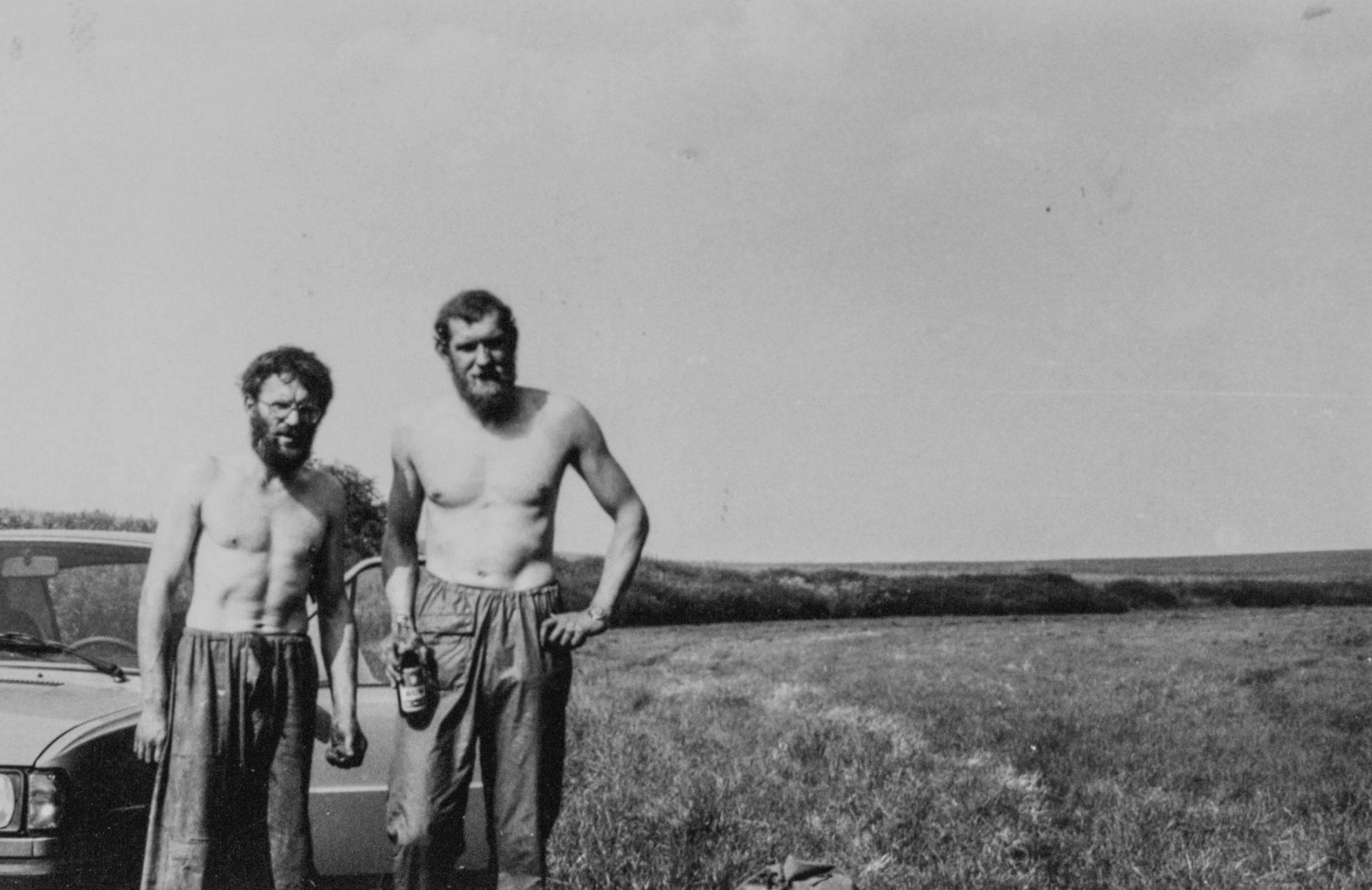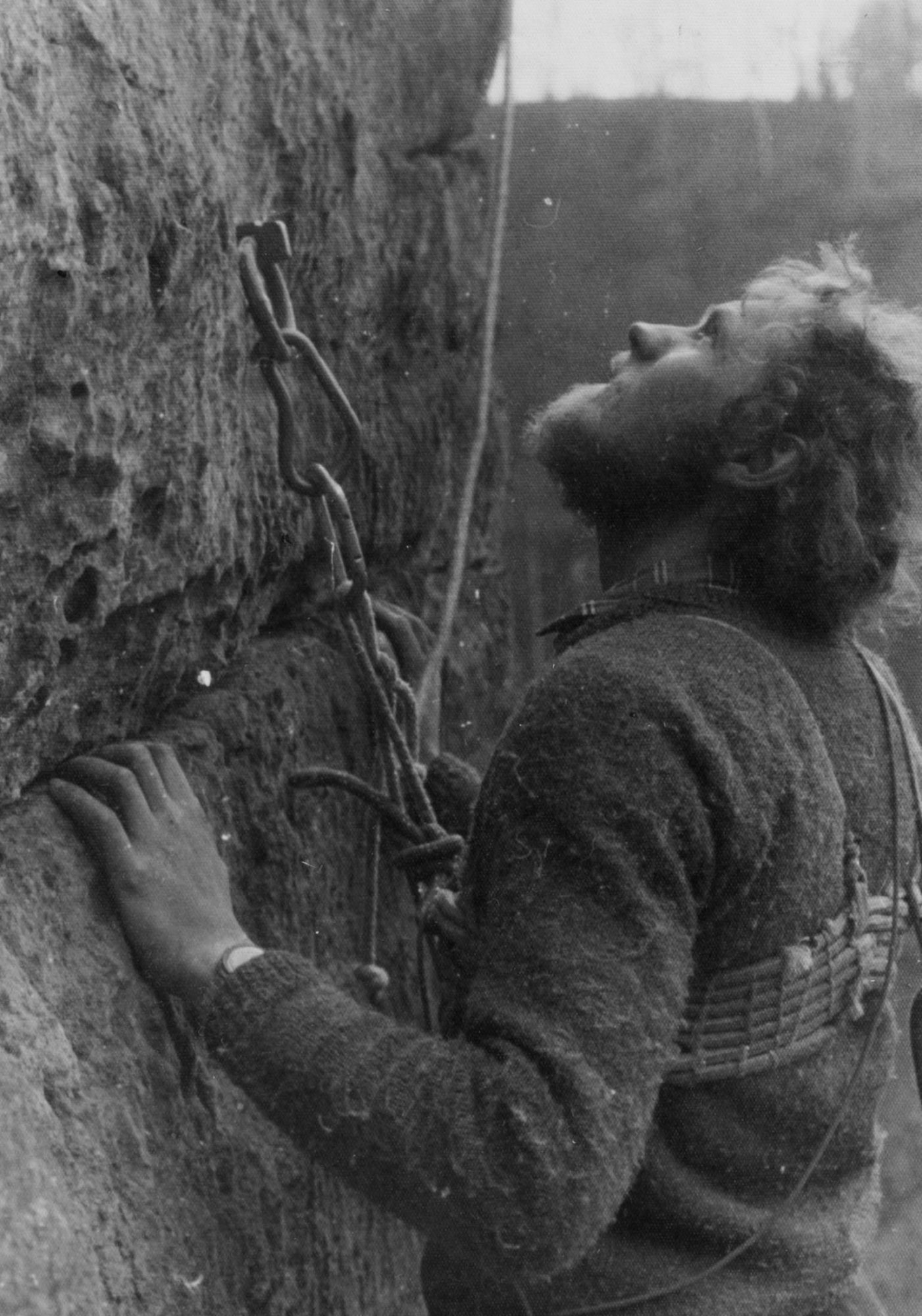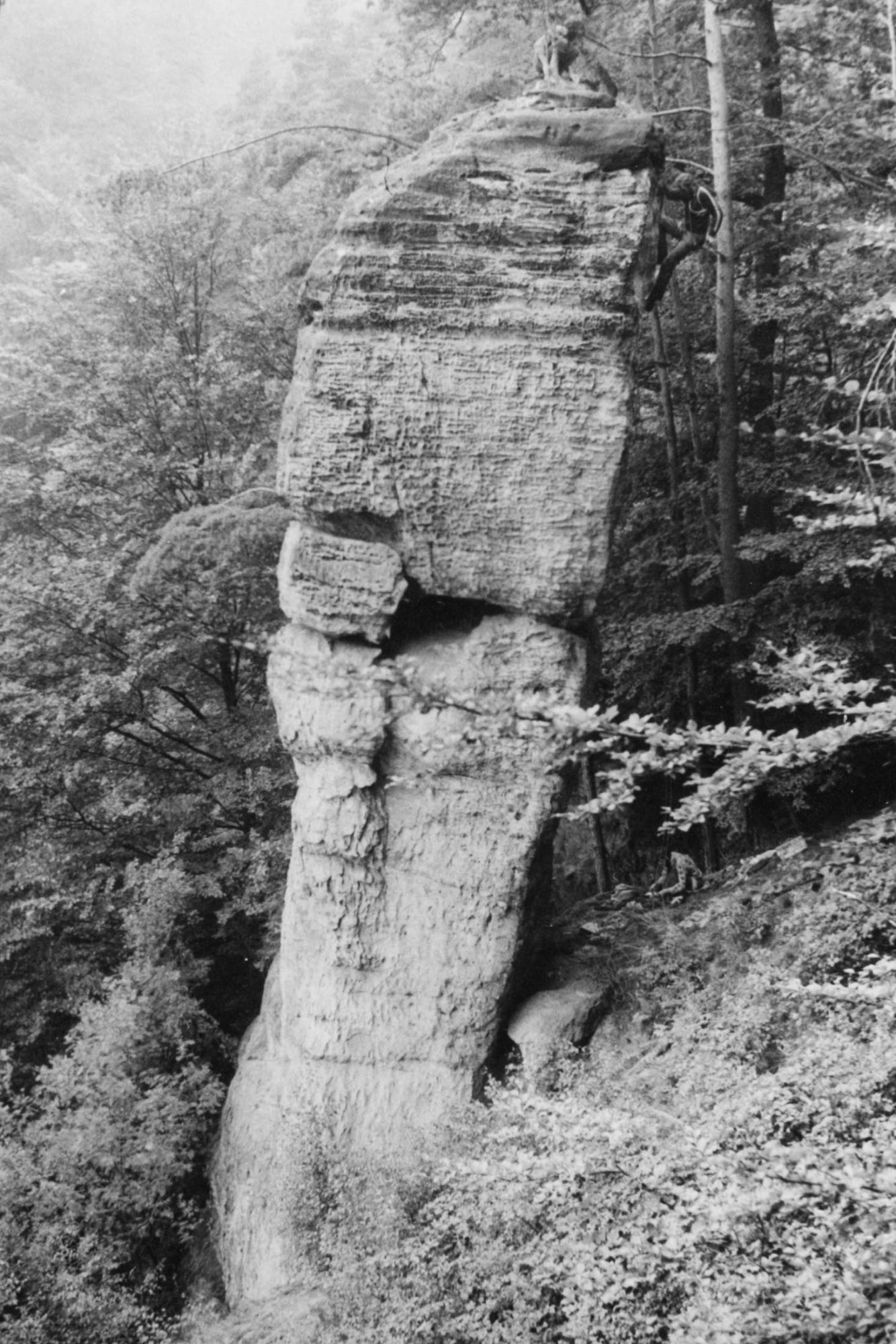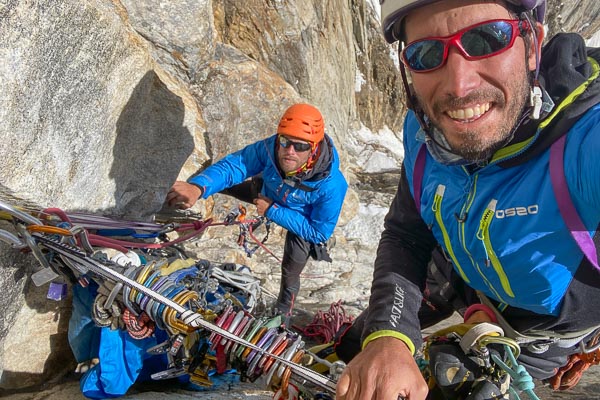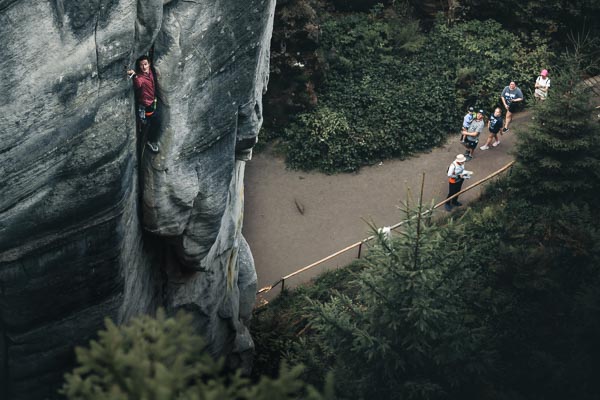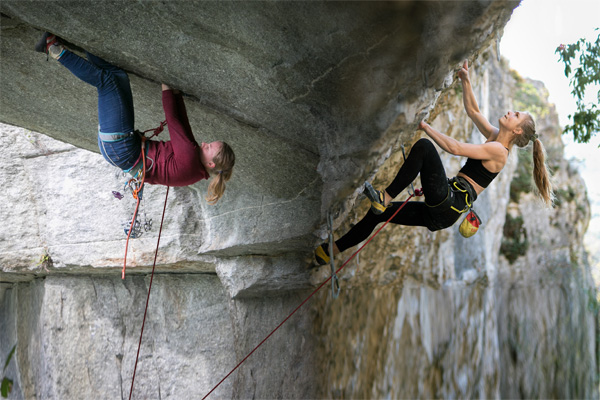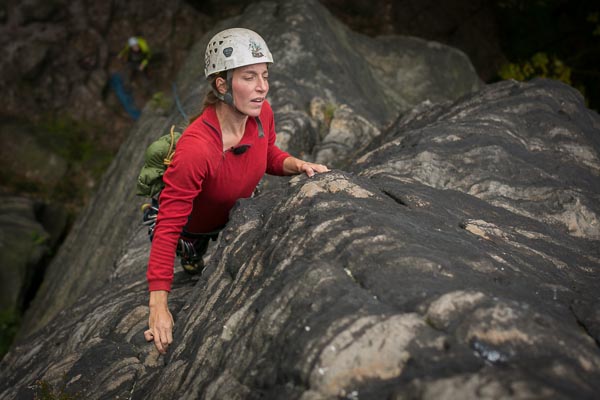THE GREATEST CLIMBING SMITH
Luboš Martínek inherited a smithy from 1932 after his grandfather. He had been loyal to the smithy and forged more than 4500 sandstone ringbolts throughout his life. How is a ringbolt born?
“They ruined this line. Why haven’t they placed a third ring into the final wall?” a disappointed climber cusses at the foot of a wall. He or she checks the guidebook once again but the ring is still missing – time to give up and go home.
The question lingers: “Why is the ring missing?”
Perhaps because placing a ring is not so enjoyable. In fact it is quite a swot.
Or maybe because forging it was not that easy as well!
Let’s ask the real expert on ringbolts – Luboš Martínek from Kokořínsko area in the northern Bohemia (the Czech Republic).
EVERY SHADE OF ORANGE
You’re entering a smithy that has stayed more or less the same since 1925. Is this what pre-war Czechoslovakia smelled like? The vision of the first Czechoslovakian president on his horse disappears as soon as you look around and recognize boxes with various types of ringbolts. Is this a blacksmith’s or climber’s home?
Luboš Martínek has the body of a basketball player but he is both a climber and a blacksmith. He has been climbing for 42 years and forged about 4,500 ringbolts in his lifetime. Just to give you the idea – it would take you 12 years if you made one ring a day. The fact that he has made such an inhuman number of ringbolts makes it quite probable that you could clip into one of those on your trip to Elbe Sandstones. “There are tons of them in Tisá, Rájec, Ostrov, and the whole Elbe Valley,” exclaims the bearded guy. And when you see how much passion and care he puts into making the rings, you would gladly whip into one of them. Not a single of his bolts ever failed and their lifespan is around a hundred years.
Luboš takes out a red-hot ringbolt stem from a forge heated to a thousand degrees Celsius, and places it into a massive power hammer. It shines with bright orange glow like a strong lightbulb. Then he needs to narrow the square part of the stem so that it could fit better into a drilled hole in the rock. With each hammer hit, the clay floor shakes a bit. His cat, Macan, is not excited, though. You watch Luboš working on the stem with his hammer and admire his precision. A few seconds, a few precise hits, and the stem gets branded with grooves that will help prevent the ring from sliding out of the glue. Finally, he threads the ring through the stem and lets it cool down. It rings smoothly, pleasantly, reminding you of the clinking of decorations on the Christmas tree. A gift for climbers is ready.

THE FAITHFUL CUSTOMER
Luboš made most of his rings, meaning thousands, for the legendary Karel Bělina – mostly, he gave them to him for free, exchanged them for some quality liquor. A kilogram of iron used to cost three Czech crowns by then (0,15 USD) so he didn’t ask his friends for money and usually just gave the ringbolts out. Thanks to Luboš, Karel could make the unbelievable 4,800 first ascents, which is definitely the highest number of first ascents per person in the Czech Republic and probably even worldwide. “In the best years, I made around 300 ringbolts a year for him,” Luboš recalls the 1980s. Karel once tried to forge a ring himself. “That looks simple, hand me the hammer,” said Karel and hit the ring with his full force. The ring whizzed across the smithy. And that’s the last time he tried smithing.
Recently, Luboš made hundreds of iron cramps for Karel’s famous via ferrata line above the town of Děčín. He made them by bending iron rods that Karel got free of charge from the ongoing bridge construction site. “Take what you can,” told him the construction manager… and that was a mistake, as Karel took his word literally. The customers are sometimes picky and have strange requests. For instance, another climber once asked Luboš: “Could you make those rings look old and rusty so that others don’t realize I’m making new routes?” He also made various crampons, pitons and even forged eight indestructible ice axes for his friends.
Luboš keeps his rarest artefacts hidden in the attic. He shows me an old German karabiner Haseney which still works: “It was buried in the sand for about fifty years. A friend found it with a metal detector and I’ve cleaned it.” Luboš also crafted himself a chest harness from a static rope. Has he ever whipped into it? “Back in the days, climbers did not fall,” he comments, turning a cracked homemade ringbolt stem that he found in the rocks.
“I don’t have access to the internet, I live like in the Middle Ages.”

DARK HUMOUR: A FRIEND TURNED GLUE
When asked about some memorable story from a first ascent, Luboš recalls a slightly dark one. It is associated with the character Jirka “Gaston” Jiskra, who started climbing in Kokořínsko area and spent his whole life there. When he died, a bunch of friends gathered to say their goodbyes to him. Several people climbed the Vyhlídková Tower and wanted to symbolically scatter part of his ashes into the valley.
Luboš knew that next to Vyhlídková Tower there was another tower with an unfinished route. He inspected the line and got an idea that they can name the rock after their friend “Gaston’s Tower”, finish it with two more ringbolts and name the route “Vzpomínková” (Memorial). “When we were placing the second ring, somebody got the idea that we could mix a bit of Gaston’s ashes into the cement. So we glued that ring with Gaston,” he says with a cheeky smile on his face. One of their friends didn’t like the idea too much because he was religious. “I say why not – now he’s part of that rock forever.”

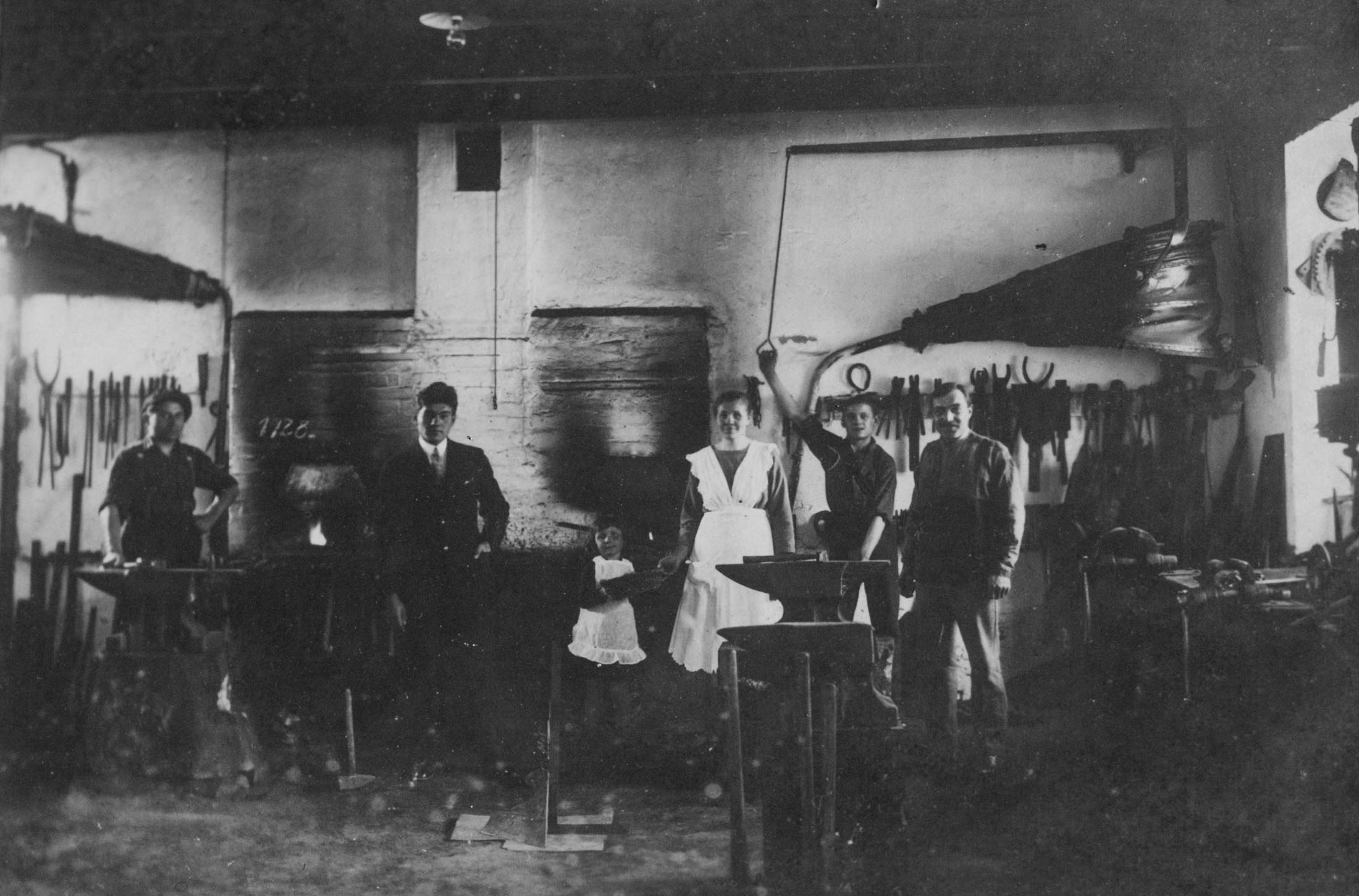
Luboš Martínek was born in 1958.
He inherited a smithy from his grandfather and spent most of his life working in it.
He made a living as an independent artist blacksmith.
“His grandfather was one of the last small businessmen in Mšeno district. It is not clear whether or not the Martínek family has a favorable attitude towards the Socialist order,” says the personnel review from the period of communist Normalization.
Because his grandfather was self-employed, the regime tried to prevent Luboš from getting to the secondary school.
He made around 4,500 ringbolts following the traditional method (one takes about 25 minutes) and he took part in around 1700 first ascents. He liked to climb in the crags Rač or Vlhošť (wider Kokořínsko area) and these are some of his favourite lines he made:
“Radostná Fantazie” VIIb/5c fr. at Masiv Trempů crag, Vlhošť area
“Soví Hukot” VIIb/5c fr. at Soví Stěna crag, Vlhošť area
“Rozporový Komín” VII/5b fr. at Rudolfův Kámen tower in the Elbe Valley.
Luboš Martínek died in a tragedy five years ago, in March 2016. This article serves to commemorate him.
.
.
__________


